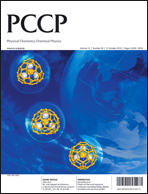The aluminium and iodine pentoxide reaction for the destruction of spore forming bacteria†
Abstract
The threat of biological weapons is a major concern in the present day and has led to studying methods to neutralize spore forming bacteria. A new technique involves the use of a thermite reaction that exhibits biocidal properties to limit bacterial


 Please wait while we load your content...
Please wait while we load your content...